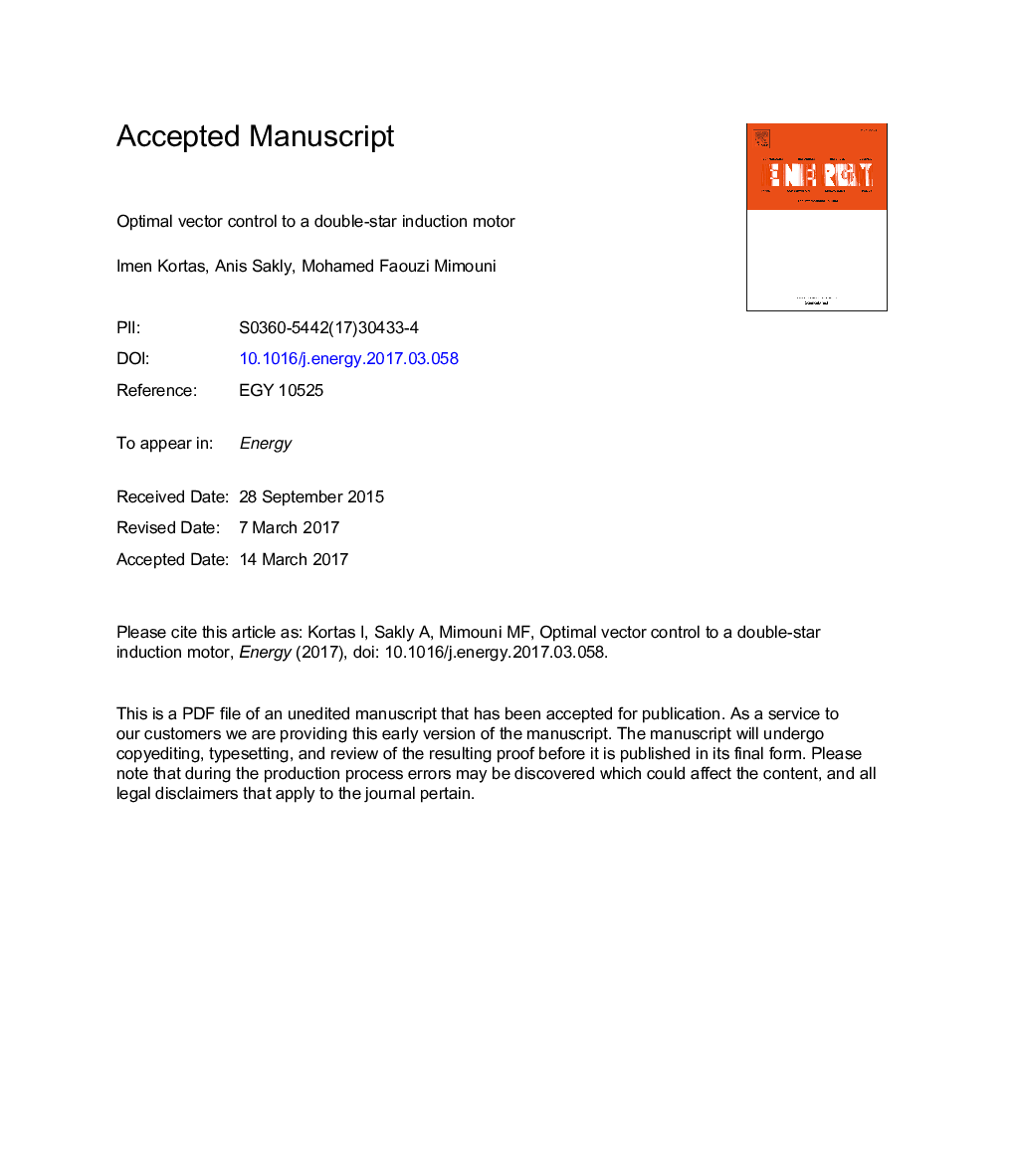| Article ID | Journal | Published Year | Pages | File Type |
|---|---|---|---|---|
| 5476778 | Energy | 2017 | 40 Pages |
Abstract
The problem of energy optimization of a Double Star Induction Motor (DSIM) using the concept of a Rotor Field Oriented Control (RFOC) can be treated by an Optimal Control Strategy (OCS). Using OCS, a cost-to-go function can be minimized and subjected to the motor dynamic equations and boundary constraints in order to find rotor flux optimal trajectories. This cost-to-go function consists of a linear combination of magnetic power, copper loss, and mechanical power. The Dynamic equations are represented by using a reduced Blondel Park model of induction motor. From the Euler-Lagrange equation, a system of nonlinear differential equations is obtained, and analytical solutions of these equations are achieved so as to obtain a time-varying expression of a minimum-energy rotor flux. The current study discusses a saturation model with respect to the rotor flux, which has significant influence in the motor's parameters. A comparative study of simulation results given from conventional and optimized RFOC proves the presented strategy's validity and effectiveness.
Related Topics
Physical Sciences and Engineering
Energy
Energy (General)
Authors
Imen Kortas, Anis Sakly, Mohamed Faouzi Mimouni,
